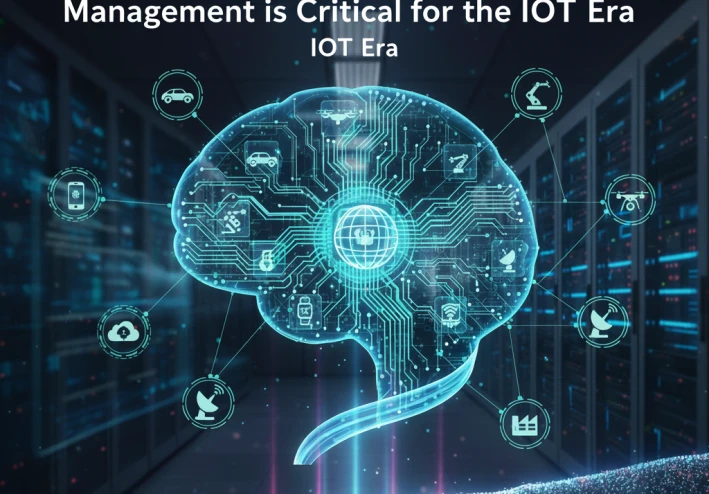
Why Effective Embedded Device Management is Critical for the IoT Era
In the age of the Internet of Things (IoT), the physical and digital worlds are fusing, driven by billions of small, purpose-built computers. These are embedded devices—the invisible brains in everything from industrial sensors, smart city infrastructure, and medical wearables to connected cars and home appliances. They are fundamentally transforming how businesses operate and how we live.
But the sheer scale, diversity, and often remote deployment of this device fleet present a monumental challenge. Managing a few hundred smartphones is one thing; managing tens of thousands of resource-constrained sensors deployed across a continent is another entirely. This is where specialized embedded device management (EDM) software steps in, providing the essential operational layer that ensures these devices—and the systems they power—remain secure, functional, and profitable over their decade-long lifecycles.
The Embedded Management Imperative: Unique Challenges
Unlike managing general-purpose computers, managing embedded devices comes with a unique set of constraints and complexities that necessitate a specialized approach:
- Resource Scarcity: Embedded devices often run on limited battery power, minimal memory (RAM/flash), and low processing power. EDM solutions must be extremely lightweight, consuming minimal resources during deployment and communication.
- Diverse Ecosystem: There is no standard operating system. Devices might run on bare metal, RTOS (Real-Time Operating Systems), Linux, or custom firmware. The management platform must be device-agnostic and support a wide array of connectivity protocols (Wi-Fi, Cellular, LoRaWAN, etc.).
- Physical Inaccessibility: Many devices are deployed in remote, harsh, or high-security environments (e.g., deep in a utility grid, inside an inaccessible industrial machine, or under city streets). Management must be fully remote and capable of handling intermittent connectivity.
- Security and Longevity: Embedded devices often have long operational lifecycles (5–15 years) and are tempting targets for cyberattacks. A single vulnerability can compromise entire infrastructure, demanding continuous, reliable over-the-air (OTA) security patching.
- Real-Time Operation: Many embedded systems are mission-critical (e.g., medical devices, industrial controls) and require deterministic, real-time performance. Any management operation must not interfere with the device’s core function.

The Core Pillars of Effective Embedded Device Management Software
A robust EDM solution is built upon four non-negotiable pillars that allow organizations to move from reactive maintenance to proactive, automated operations:
1. Remote Monitoring and Diagnostics
Effective management begins with visibility. EDM software provides a centralized dashboard offering a single, holistic view of the entire device fleet.
- Real-Time Health Metrics: The platform continuously collects crucial telemetry data—battery life, CPU load, memory usage, and application logs—without impacting device performance.
- Alerting and Anomaly Detection: Advanced EDM uses pre-set thresholds and, increasingly, AI/ML to detect abnormal behavior (e.g., a sudden temperature spike or an unusual communication pattern) and trigger immediate, automated alerts for predictive maintenance.
- Remote Access and Troubleshooting: For diagnostics, the software provides secure, low-bandwidth remote shell access, allowing technicians to inspect logs and troubleshoot issues without requiring a physical service trip—drastically reducing operational expenditure (OpEx).
2. Over-the-Air (OTA) Software and Firmware Updates
In the modern threat landscape, the ability to rapidly and reliably deploy software updates is paramount. OTA update capability is arguably the most critical feature of embedded device management.
- Delta Updates: To conserve bandwidth and battery life, sophisticated EDM uses differential updates, sending only the code changes (deltas) rather than the entire firmware image.
- Secure and Atomic Rollouts: Updates must be cryptographically signed and verified (secure boot) to prevent malicious injection. They must also be atomic—meaning the update either fully succeeds or the system safely reverts to the previous working version, preventing the device from being ‘bricked’ (rendering it inoperable).
- Staged Rollouts: EDM enables controlled, staged rollouts, deploying updates to small pilot groups before pushing them to the entire fleet, minimizing the risk of a widespread failure.
3. Security Management and Provisioning
Security must be built in from the ground up and maintained throughout the device lifecycle.
- Secure Provisioning: EDM solutions securely manage the initial identity of a device, including cryptographic keys and certificates, ensuring it can be trusted by the cloud and the network.
- Policy Enforcement: The software enforces security policies, such as mandatory use of encrypted communication channels (TLS/DTLS), firewall configurations, and access controls.
- Vulnerability Patching: It provides the mechanism for delivering crucial security patches and coordinating certificate rotation, directly addressing the long-term security challenge of permanently deployed devices.
4. Scalability and Lifecycle Management
As device fleets grow from hundreds to millions, the management platform must scale linearly without sacrificing performance or cost-efficiency.
- Zero-Touch Provisioning (ZTP): ZTP allows devices to connect and configure themselves automatically upon first boot, streamlining mass deployment and reducing human error.
- Asset Inventory and Audit Trail: The system maintains a complete, auditable record of every device’s location, hardware revision, software version history, and maintenance record, which is vital for regulatory compliance and efficient end-of-life planning.
The Strategic Value of EDM
For any business building its future on connected products—be it a manufacturer of smart factory equipment, a utility deploying smart grids, or a fleet operator—embedded device management delivers clear, tangible ROI:
- Reduced Operating Costs: Eliminates expensive truck rolls for diagnostics and updates.
- Faster Time-to-Market: Accelerates development and deployment cycles through ZTP and reliable OTA.
- Compliance and Risk Mitigation: Ensures devices comply with evolving security standards and regulatory mandates, dramatically lowering the risk of fines or catastrophic system failures.
- New Revenue Streams: Enables new business models like "as-a-service" by providing the platform for remote feature activation and continuous functional upgrades long after the initial sale.
In essence, embedded device management software is the silent operational partner that transforms a large collection of scattered, simple devices into a single, cohesive, intelligently managed system. It is the necessary infrastructure for scaling the IoT and unlocking its full economic and societal potential.
































